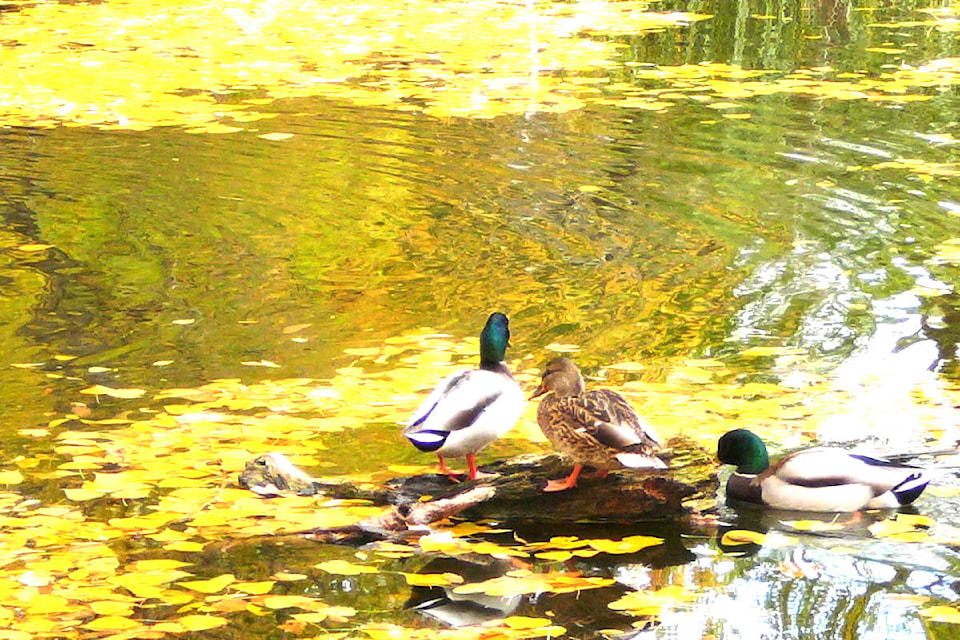By Gwen Steele
Good soil and mulch are two cornerstones of xeriscape/water-wise gardening. Fall is the perfect time to collect free materials to make compost, for improving soil next year, or for mulching gardens and turf.
We were so grateful for the shade of deciduous trees during summer heat.
Now instead of feeling that fallen leaves are a burden to clean up and get rid of, we can again be grateful to the trees, honouring them by recreating the closed loop waste cycle found in nature where leaves fall and rot in place.
This provides mulch which breaks down into soil returning the nutrients to a state where the tree can once again utilize them.
We can ‘re-use’ their leaves in a myriad of ways.
Here are some suggestions:
Do the final lawn mowing and leave shredded leaf/grass clippings on the lawn to rot and rebuild the soil.
Leave small leaves where they fall in garden beds to form a natural mulch.
Rake mounds of leaves around tender plants to provide some winter protection.
Pile leaves thickly over root vegetables and leeks to keep the ground from freezing so vegetables can be dug as needed through winter.
You may need to secure the leaves by placing wire over or around them.
These ‘protection’ leaves could be layered into the compost bin next spring.
Make leaf mould by spraying water into yard waste bags of leaves.
Fasten them shut and leave overwinter (preferably in a sunny place).
Next spring you’ll have chunky, nutrient-rich, leaf mould to dig into garden soil or use as mulch.
Earthworms may even grow in the sealed bags.
This form of soil amendment and mulch is very effective in helping to hold nutrients and moisture, especially in fast-draining, sandy soil.
Use coloured or black bags as leaves don’t seem to decompose in clear plastic.
An alternative is to make a big pile of leaves – moistening layers as you make the pile.
Then cover with a coloured tarp and seal around the edges with wood or rocks to keep the pile moist over winter.
For larger leaves and some garden debris, composting can be speeded up and volume drastically reduced by shredding with an electric mower.
Alternating layers of leaves and smashed Halloween pumpkins will make great compost for next spring.
Rake up and send all walnut leaves to the landfill compost. They contain a compound that inhibits growth of some plants.
Save some bags of dry leaves (small or shredded) to place beside your black composter so you can cover each deposit of kitchen waste.
Without the leaves (dry material) being added, your black composter will contain a slimy, partly decomposed mess, not good compost/soil.
Another way to use kitchen green waste is to dig a trench in an empty vegetable garden, then dump the fruit and vegetable scraps into the trench and cover with soil.
Gwen Steele is executive-director of the non-profit Okanagan Xeriscape Association. Learn more about Gardening with Nature and plants for the Okanagan on the website at www.okanaganxeriscape.org
